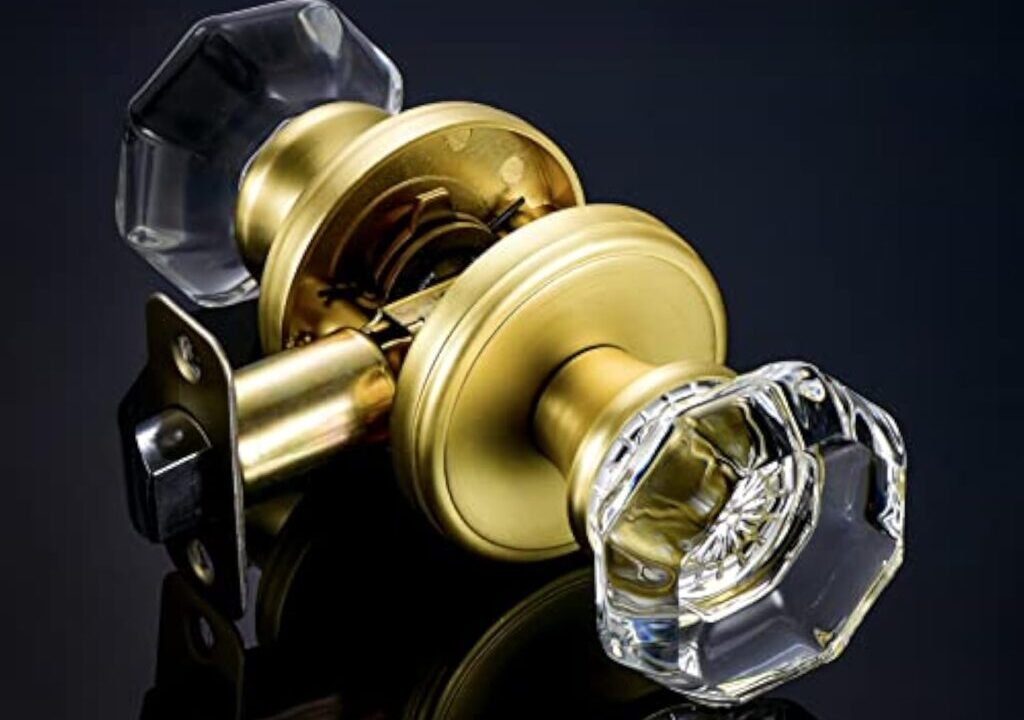Blog
Five Reasons to Choose”Hidden Screw Design” Lock Panel for Wooden Doors

Five reasons to choose "hidden screw design" lock panel for wooden doors
- Aesthetic Appeal: The panel surface is neat and smooth, with no exposed screws to mar its appearance. It can blend with various decoration styles, enhance the overall beauty of the door, add a touch of sophistication to the space, and fits modern minimalist and high-end interior styles.
- Enhanced Texture: Concealed details convey a sense of refinement and careful craftsmanship.
- Easy to Clean: Without screw holes or exposed screws, the surface has no gaps or grooves where dust can accumulate. It can be kept clean with a simple wipe using a damp cloth.
- Higher Safety: On one hand, hidden screws are not easy to be removed by others to open the door lock, enhancing security. On the other hand, it avoids potential hazards such as scratches to people or damage to the door caused by loose or falling screws.
- Door Protection: Screw holes of traditional door lock panels may cause wooden doors to crack or deform due to long-term use or improper installation. The hidden design prevents such issues and better protects the door.
2. Common Implementation Methods
- Screws Located on the Inner/Back Side of the Panel:
- For Disassembly/Repair:
It is usually necessary to first remove the inner panel of the door (the screws of the inner panel may be visible or partially hidden) to access and loosen the screws that secure the outer panel.
- Screws Located on the Sides/Edges of the Panel:
- Decorative Covers/Clip-on Covers:
- Magnetic Panel:
3. Installation Methods (Matching Different Concealment Designs)
- Connecting Column Fixation: A connecting column is installed between the inner and outer panels. Both ends of the connecting column are inserted into the fixing lugs on the panel, with a column head at one end. There are openings around the inner panel, and fasteners are passed through these openings to fix the column head, thereby connecting the inner and outer panels and hiding the screws.
- Decorative Piece Covering: After the mounting column of the inner lock body passes through the door panel and connects with the outer lock body, a decorative piece is used to cover the fixing screws. The positioning holes on the decorative piece can be used to install signs or other components while also hiding the screws.
- Hidden Receiving Component Installation: A hidden receiving component is installed on the side of the rear panel opposite the lock body. The front cover plate, rear cover plate, upper insert, lower insert, and other components are riveted together with rivets. By utilizing the elastic function of the rotating component, the upper insert and lower insert can clamp into the grooves of the rear panel, thus fixing the rear panel and hiding the screws.
4. Precautions for Disassembly and Maintenance
- Read the Instruction Manual Carefully: The hiding methods vary greatly among different brands and models, so it is essential to follow the instructions.
- Find Hidden Points: When disassembling, check the edges, bottom, and other parts of the panel for small gaps, clip points, or the prying position of the decorative cover.
- Use Appropriate Tools: Avoid using brute force or sharp tools to pry, as this may scratch the panel or damage the decorative cover. Usually, a small flat - head screwdriver, plastic pry bar, or special tool is needed.
- Keep Small Parts Safe: Decorative covers, small screws, and other small parts are tiny and should be kept carefully during disassembly to prevent loss.
5. Application Scenarios
- Home Bedrooms and Bathrooms: It can add overall beauty to the home environment, provide privacy protection, and its simple appearance can match various home decoration styles.
- Hotel Guest Rooms: It helps to improve the overall grade and image of the hotel, giving guests a more comfortable and exquisite living experience. At the same time, it facilitates the hotel's daily cleaning and maintenance work.
- Office Spaces: When used in offices, meeting rooms, and other places, it can make the appearance of the door more neat and professional, coordinate with the office environment, and help protect the safety and privacy of the office area.
Summary:
A "door lock panel with hidden screws" is a choice that emphasizes aesthetic design. It hides functional screws through various clever methods (such as inner side fixation, edge fixation, decorative cover covering, or magnetic attraction), resulting in a neat, high - end, and easy - to - clean door lock appearance. More care is required during installation and maintenance compared to traditional panels with visible screws, and specific steps should be followed.

